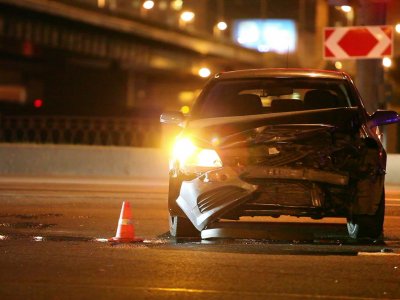 As our reliance on road transport increases, so too does the incidence of road accidents. More than 1.25 million people worldwide die each year as a result of traffic crashes – in Australia alone, there were 1226 road fatalities in 2017.
As our reliance on road transport increases, so too does the incidence of road accidents. More than 1.25 million people worldwide die each year as a result of traffic crashes – in Australia alone, there were 1226 road fatalities in 2017.
One of the main reasons these accidents occur is drivers’ inability to recognise and respond to hazards.
To address this issue, UQ School of Psychology’s Professor Mark Horswill, along with Dr Andrew Hill, and Associate Professor Marcus Watson, developed an online program that coaches drivers to be more perceptive of hazards. This latest course is part of research that includes the highly successful hazard perception test that is currently part of the Queensland Government’s driver licencing system.
“Since 2008, approximately 440,000 drivers have taken our test as part of the graduated licensing scheme that Queensland drivers need to complete to obtain their open driver's licence,” Professor Horswill says.
“Independent data released in 2016 indicate that novice crash rates have reduced by 13 per cent every year as a result of this licensing scheme – which our test is a central component of.”
The team’s new hazard perception training program complements the hazard perception test. Developed according to psychological research findings, it can be accessed by anyone, anywhere, as long as they have internet access.
“In traditional driver training, drivers don’t get to see the very things that we’re trying to train them to avoid – crashes. Our training program shows participants video footage of over a hundred real life Australian crashes, as well as near-misses and other traffic conflicts," Professor Horswill says.
"Given that the average driver crashes once every ten years, trainees are essentially experiencing more crashes than the collective knowledge of over a thousand years of driving experience.
"Expert drivers share their insights into how to anticipate and avoid these crashes, via a number of different evidence-based exercises.”
The psychological advantage
But how can psychology help researchers understand how to train hazard perception?
The central premise of the research is that drivers with good hazard perception have a more sophisticated mental representation of the traffic environment than drivers with bad hazard perception.
This more sophisticated mental representation provides expert drivers with all sorts of advantages, such as being better able to predict what could happen next in any given traffic situation.
The hazard perception test is designed to showcase the level of sophistication of a driver’s mental representation. This is why it is thought drivers who score higher in the hazard perception test have fewer crashes. The hazard perception training program refines the trainees’ perceptions of driving, by showing them various examples of dangerous situations and providing expert drivers’ reactions.
“We give each participant an expert’s insight in driving environments, so that they learn to see more than the average driver usually would," Professor Horswill says.
Participants therefore improve their own understanding of traffic environments, so they can better anticipate and avoid danger when they are out on the road themselves.
Defensive driving by any other name?
While it may seem similar, this training program shouldn’t be confused with defensive driving training.
"One crucial difference with our program is our use of video footage. This means that we can show more rare and dangerous situations than would be possible during a typical on-road driving lesson. We essentially compress a thousand years of crash experience into a little over three hours," Professor Horswill says.
“Our assessments and training are developed and evaluated using scientific evidence, which means we can be more certain that the training program does what it is intended for – reducing the risk of traffic accidents and road fatalities.
“Compared to others, our program can be easily rolled out at scale, and at minimal cost, because it is automated and online.”
Another crucial difference is that driver training is usually regarded as a ‘one hit wonder’. Although many perceive that one or two days of defensive driver training remains effective for the rest of a driver’s life, evidence suggests that this assumption is unlikely to be true.
“Our approach allows drivers the opportunity to return for regular, low-cost, high-convenience online booster training sessions, maintaining drivers’ hazard perception skills at a high level throughout the years,” Professor Horswill says.
Professor Horswill also found that traditional training often increases drivers’ confidence – which isn’t always a good thing, because it can lead to more dangerous driving as confident drivers take more risks on the road.
“Drivers who have taken our perception training don’t increase in confidence. In fact, evidence suggests that elements of our training reduces risk-taking behaviours such as speeding,” Professor Horswill says.
The road ahead
Although the longer-term project has already influenced so many Queensland drivers’ perceptions for the better, Professor Horswill has an even grander vision for this phase of the training’s future.
“We’re at the stage where we have a working prototype, and are currently running formal evaluations,” Professor Horswill says.
“We have already published evidence that elements of our training program benefit a wide range of drivers, including young novices, drivers with Attention Deficit Hyperactivity Disorder (ADHD) symptoms, mid-age experienced drivers, and drivers aged over 65.
“Our next step is to persuade government and industry to promote and use our new training program.”
With a positive reduction in crash rates from only Queensland drivers taking the 2008 hazard perception licencing test, Professor Horswill’s training program sees further substantial reduction on drivers’ crash rates.
“My ultimate vision would be for all drivers, at all levels of experience and different demographics, to complete some version of this product, which would help reduce crash rates.”



